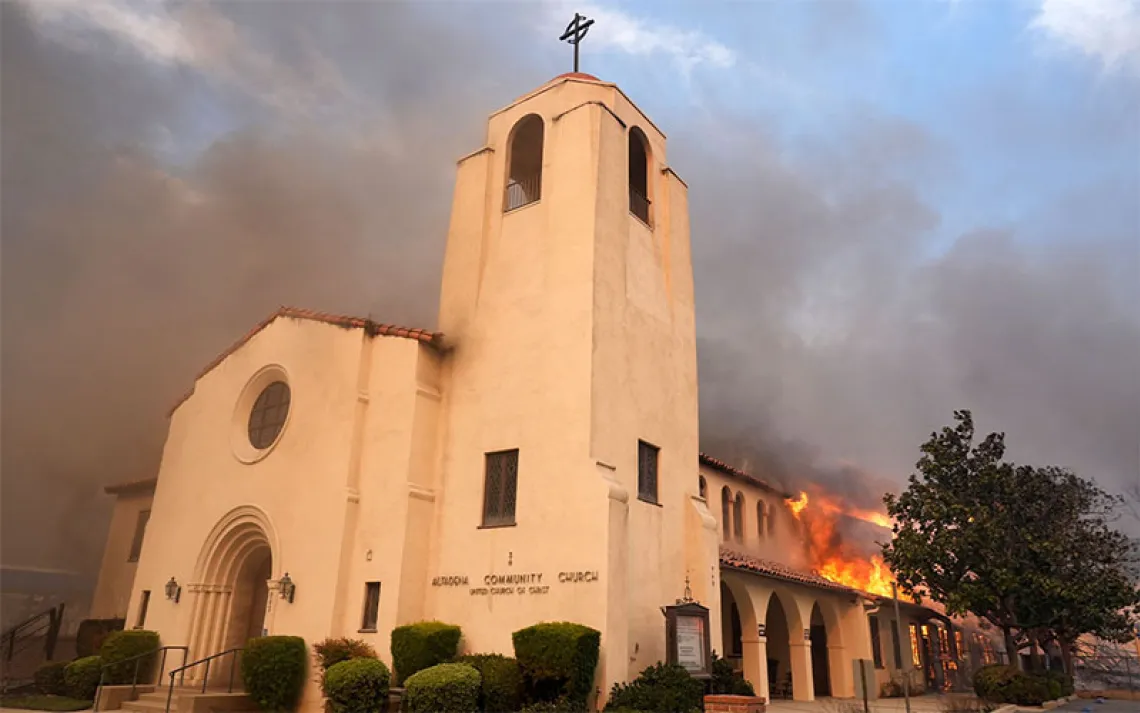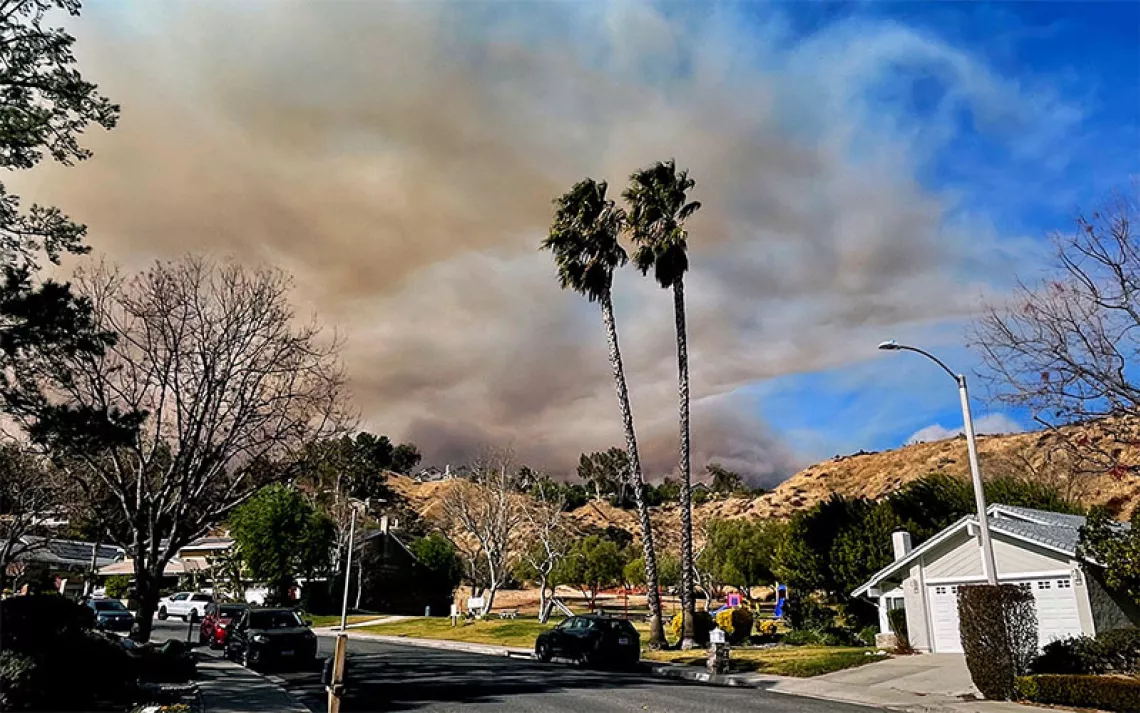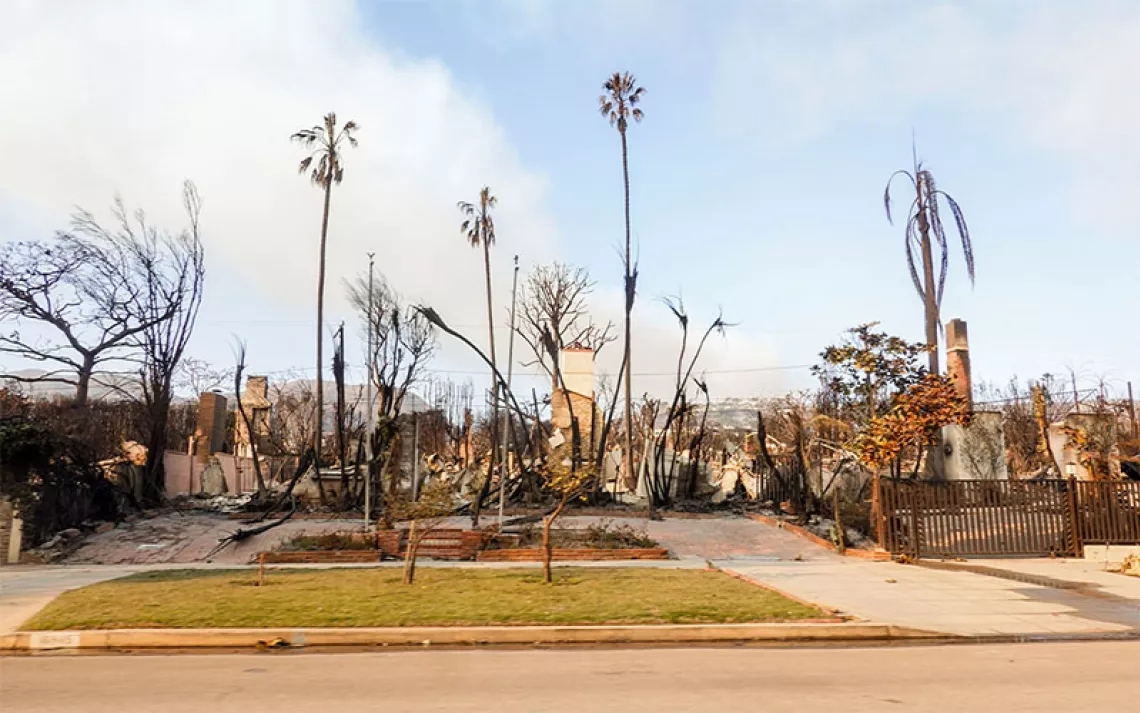Controlled Burns Aren’t Just for the Dry West—Swamps Need Fire Too
On the East Coast, fire helps revive threatened plants, and could even counter sea level rise
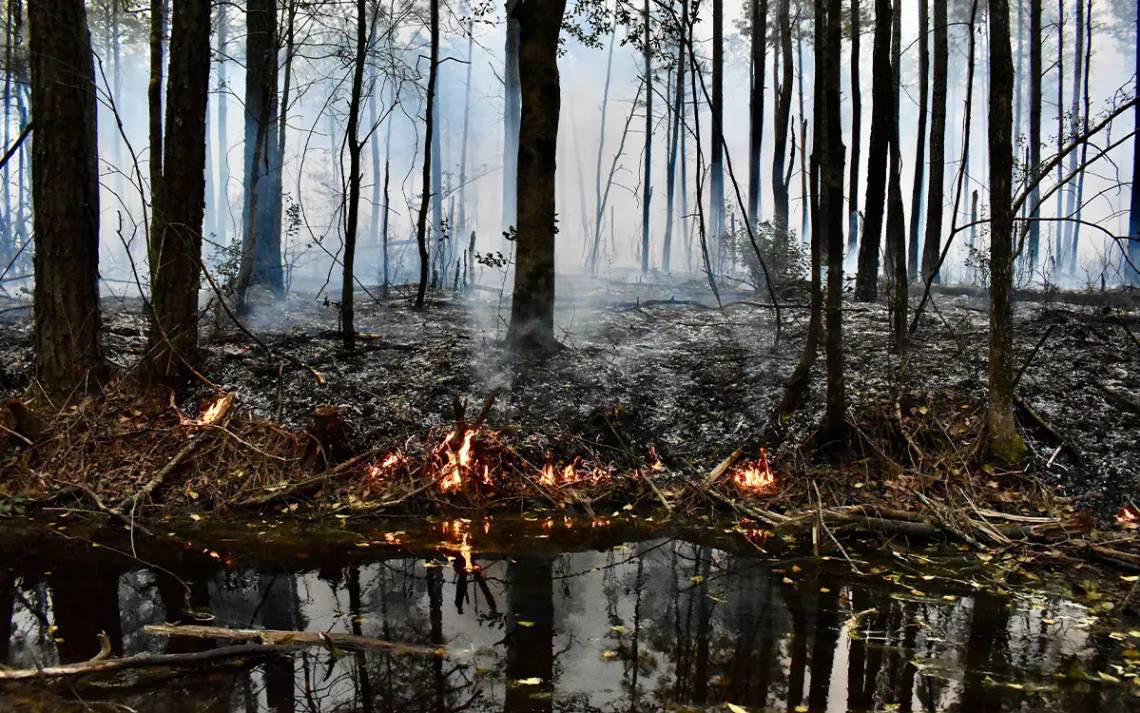
Fire burning on a swamp the Nature Conservancy owns on Maryland's Eastern Shore. | Photo by Matthew Kane
A firefighter paced carefully along the edge of a sandy dirt road in late April. The road ran through a muggy stand of trees. Water pooled in ditches, and ferns hung over them. Using a drip torch, the firefighter spurted out flames in controlled lines over the landscape. Farther away from the road, a large drone flew in a carefully mapped grid, dropping gobs of chemicals called dragon eggs that burst into flame on the forest floor. Soon, the woods were ablaze, the heat so intense that it seemed like the journalists and communications teams observing were fighting every cell in their body begging them to flee.
Only a few minutes later, the fire died down. Greenbriar thickets once five feet high had been reduced to ash on the forest floor. The flames flickered out against the standing water.
The Nature Conservancy owns this tract of wetland they torched on Maryland’s Eastern Shore. Beneath the ashes, where stands of grass rose just minutes before, the sphagnum moss was still wet. In the months following, rare orchid plants rose, pitcher plants thrived, and grasses burst forth. This longleaf pine ecosystem has gained a new lease on life.
For those used to hearing about the importance of prescribed fire to prevent wildfires in the dry West, the idea of fire on the rain-soaked East Coast might seem unnecessary, and burning a wetland almost silly. But eastern wetlands—from longleaf pine forests to marshes full of waving grass—could benefit from prescribed fire too. Now, after decades of fire suppression, scientists, nonprofits, wildland managers, and Indigenous groups are working to bring fire back.
“Historically, fire would have swept through the majority of our habitats in North America at a fairly regular rate,” says Deborah Landau, the director of ecological management for the Maryland/DC chapter of the Nature Conservancy. “Here in Maryland, most of our habitat historically would have burned maybe about every four to six years.”
That includes the wetlands, and the East—from New England all the way south and west into the Gulf—has many. Some are standing water wetlands, and some have vegetation in patches, like the Everglades. Others may only see standing water only seasonally.
Most of those more seasonal wetlands can benefit from small, controlled fires. Damp, humid pine forests, once ubiquitous throughout the Southeast, have become increasingly fragmented. Partially this is due to land development and timber harvest, but it’s also due to fire suppression. Longleaf pine (Pinus palustris), the state tree of Alabama, used to dominate more than 90 million acres of the Southeast. Now, even with restoration efforts, only 5 million acres remain or have been restored.
Now is the time for environmental journalism.
Sign up for your Sierra magazine subscription.

These pines, like some of their western cousins, are born to burn. The pinecones “are glued shut with sap and resin, and they need the heat of a fire to open up,” Landau explained. Fire opens the cones, and also burns off other vegetation, creating newly dark, fertile soil for a baby pine.
Longleaf pine cones can open up eventually on their own. But if there are too many shady trees around, the seeds don’t have a clear place to sprout and enough light to grow tall and strong. Other trees—such as sweetgum and red maple—take root instead. They shade out young pines and suck up moisture, turning a seasonal wetland into a forever forest. It’s not just the pines that suffer. “Historically, we had pitcher plants all over the eastern shore of Maryland,” Landau says. “Pitcher plants really need disturbance; they need a lot of light. And what's happened as these forests have closed in and gotten darker and darker, the pitcher plants have just blinked out.” Burn out the undergrowth, like the fire on the Nature Conservancy’s land, and these rare, shy plants have a chance.
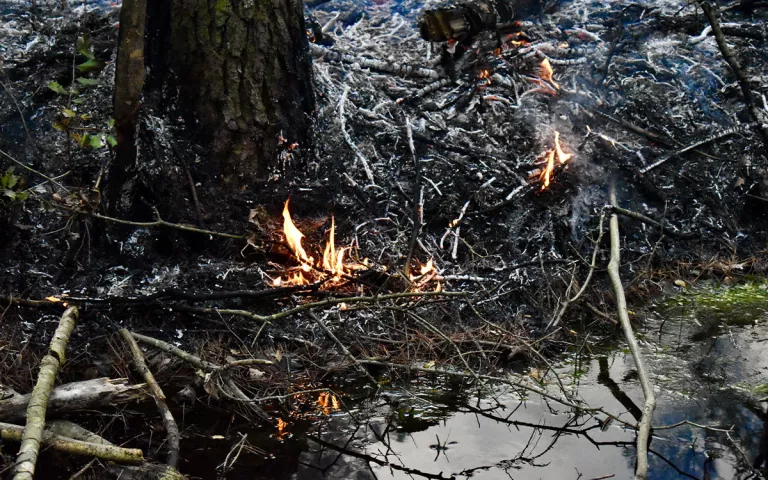
Photo by Matthew Kane
Other areas that are wet year-round—where “wetland” fades into “marsh”—also benefit from a burn. “Even wetlands that have standing water will burn quite rapidly across it,” said Melanie Vanderhoof, a research geographer at the US Geological Survey’s Geosciences and Environmental Change Science Center in Denver, Colorado. “Fire can travel just fine across areas where you can also drive a boat.” The plants simply burn down to the water, and the water takes care of the fire.
Indigenous groups have long known the benefits of fire. When he was a child, Jeff Kirwan’s father would take him to the Eastern Shore in the winter. Kirwan, now an emeritus professor of forestry at Virginia Tech in Blacksburg, and a member of the Nause-Waiwash Band of Indians, remembers that when the weather was right, you could “see a 360-degree view of marshes burning; it's really quite awesome,” he said. Watching the marsh burn, Kirwan’s father would tell his son about his heritage, and how their ancestors had burned the land for generations.
Eventually, Kirwan pursued his PhD in forestry. “I soon realized that there aren't a whole lot of places where the custom of burning has gone on uninterrupted since the days when Indigenous people were managing landscapes,” he said. By the 1960s, the Eastern Shore was one of the few places left where Kirwan and his father could watch the marsh burn. But today even those fires have been petering out with fewer people to manage the burns. So when Kirwan got an offer from the Nature Conservancy to bring a team to burn his own private property on the shore, he jumped at it.
The positive effect was immediate. When spring arrived, he said, the burned area shot up into a waving meadow of green, long before unburned areas nearby. The aftermath of the burn is also good for plant species such as three-square grass and three-cornered grass. Waterfowl and muskrat love their green shoots, so hunting and trapping improves where these grasses thrive.
Kirwan’s son Matthew, a coastal geomorphologist at the College of William & Mary’s Virginia Institute of Marine Science, hypothesizes that burning marshes could even provide a bulwark against sea level rise, although this has not yet been proved. It “requires a commitment to like a decade-long study, at least,” he said. But “so much of marsh resilience to sea level rise has to do with how much organic matter the plant can produce.” A longer growing season jump-started by fire could mean the plant has more time to grow. That growth becomes death, and those dead plants can build up the soil. That increased soil might be better able to protect the shore against sea level rise, erosion, and the intense storms associated with climate change.
There is still some resistance to intentionally setting fires, according to Brian Needelman, a soil scientist at the University of Maryland, College Park. Some locals in areas like Somerset County, Maryland, where Needelman works, “would love to see their marshes burned,” but others, particularly those who have moved in for retirement or to own vacation homes, are not so keen.
But across the East Coast and down south, states and private landowners have been quietly burning more area per year than anywhere else in the lower 48 states—combined. In previously burned areas in eastern Maryland, tiny, baby sundews dapple the road. Pitcher plants spontaneously sprout, and rare orchids are returning. The swamps burned. And it was a saving grace.
 The Magazine of The Sierra Club
The Magazine of The Sierra Club
